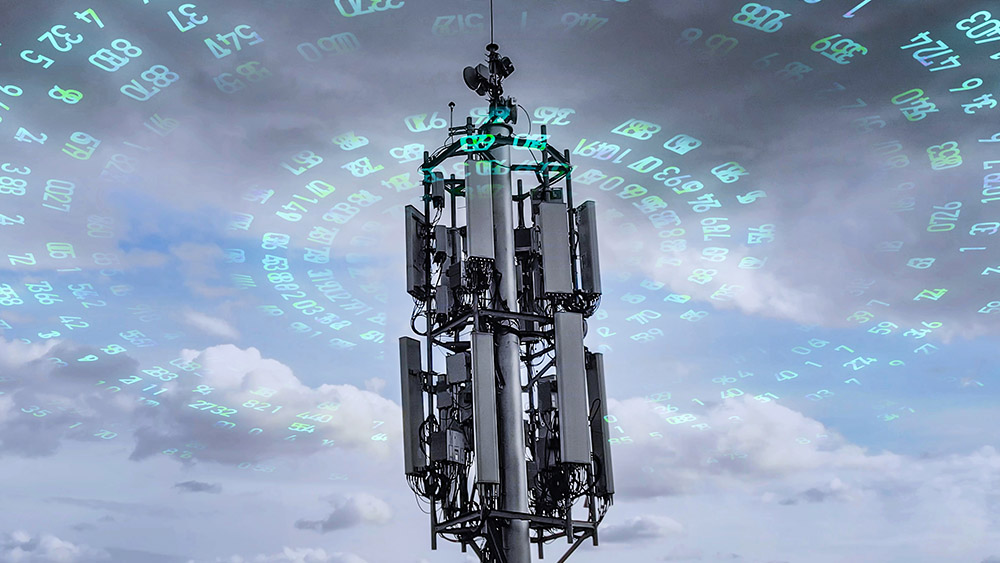The hidden health risks of screen time: How your smartphone affects your body
11/04/2025 / By Belle Carter

- Prolonged exposure to blue light from screens can lead to digital eye strain, myopia and retinal degeneration. Children are particularly at risk, with a 21 percent increase in myopia odds for each additional hour of daily screen time.
- Cell phone use can accelerate hearing decline, with one hour of daily calls potentially desensitizing ears and reducing hearing ability. Bluetooth devices offer no safe alternative.
- EMFs from screens can disrupt heart rate variability and lead to abnormal blood metabolites linked to hypertension and insulin resistance.
- Men who store phones in their pockets risk reduced sperm motility and pregnant women exposed to higher EMF levels face nearly triple the miscarriage risk.
- Sedentary screen habits contribute to ‘text neck,’ a forward-head posture strain that can trigger chronic pain, headaches and spinal misalignment. Excessive screen use can also shrink gray matter in brain regions governing impulse control and emotional regulation, increasing risks of depression, anxiety and ADHD.
- While complete abandonment of smartphones is unrealistic, experts urge moderation: follow the 20-20-20 rule, use speakerphone or wired headphones, delay smartphone access for children and replace screen time with offline activities.
In an era where smartphones are practically extensions of our hands, few pause to consider the invisible toll these devices take on our health. Beyond the addictive scrolling and endless notifications, screens emit electromagnetic fields (EMFs) and blue light—both of which have been linked to a cascade of physiological disruptions. From vision deterioration to cardiovascular strain, fertility issues and even potential cancer risks, mounting scientific evidence suggests that excessive screen time may be silently reshaping our bodies—and not for the better.
As explained by BrightU.AI‘s Enoch, smartphones emit high-energy visible (HEV) blue light, which penetrates deep into the eye, reaching the retina. Unlike other wavelengths, blue light isn’t fully filtered by the cornea or lens, leading to cumulative damage over time. Studies show prolonged exposure increases the risk of digital eye strain, myopia (nearsightedness) and even retinal degeneration.
Dr. Savleen Kaur, a pediatric ophthalmologist, warns that children glued to screens face heightened risks. A meta-analysis of over 335,000 participants found that each additional hour of daily screen time raised myopia odds by 21 percent. Meanwhile, research in Ophthalmic Epidemiology linked more than two hours of smartphone use per day to symptoms like dryness, redness and blurred vision—early warning signs of long-term damage.
EMFs and the body’s silent stressors
Beyond vision, EMFs emitted by phones and wireless devices interact with our body’s own electromagnetic fields—disrupting cellular communication and potentially altering organ function. Studies reveal troubling connections:
- Hearing loss: Prolonged cell phone use may accelerate auditory decline comparable to aging. Dr. Naresh Kumar Panda notes that even one hour of daily calls can desensitize ears, while Bluetooth devices offer no safe alternative.
- Heart health: Research in the Journal of the American Heart Association identified a “biological fingerprint” of screen time—abnormal blood metabolites linked to hypertension and insulin resistance. EMFs also disrupt heart rate variability, a key indicator of cardiovascular stress.
- Fertility threats: Men who store phones in their pockets risk reduced sperm motility, while pregnant women exposed to higher EMF levels face nearly triple the miscarriage risk, according to a California study.
The spine, brain and mental health crisis
Sedentary screen habits contribute to “text neck,” a forward-head posture strain that can trigger chronic pain, headaches and spinal misalignment. A case study of a 24-year-old heavy smartphone user revealed arthritic neck degeneration—a condition typically seen in older adults.
Perhaps most alarming are the neurological effects. Excessive screen use shrinks gray matter in brain regions governing impulse control and emotional regulation, mirroring patterns seen in addiction. Clinical psychologist Gadi Lissak warns that these changes heighten risks of depression, anxiety and ADHD. A 2024 study found teens with four to six hours of daily screen time had 35 percent higher depression rates than peers with less than two hours.
A safe way forward
While abandoning smartphones entirely isn’t realistic, experts urge moderation:
- Follow the 20-20-20 rule: Every 20 minutes, look at something 20 feet away for 20 seconds.
- Use speakerphone or wired headphones to minimize EMF exposure.
- Delay smartphone access for children—social media’s mental health risks peak during adolescence.
- Replace screen time with offline activities like reading, walking or playing instruments.
As Panda cautions, “We can’t tell people to stop using cell phones—but to use them judiciously.” In a world where digital dependence is unavoidable, awareness and small adjustments may be the keys to mitigating harm. The question isn’t whether screens affect us—but how much damage we’re willing to accept before changing our habits.
Watch the video below that talks about EMF hazards, including extended screen time and unchecked Wi-Fi exposure.
This video is from the BrightU Series Snippets channel on Brighteon.com.
Sources include:
Submit a correction >>
Tagged Under:
blue light, brain health, EMF, eye health, eye strain, Glitch, HEV, mental, mental health, mind body science, myopia, natural health, ophthalmology, radiation, retinal degeneration, screen time, Social media, spinal misalignment, vision
This article may contain statements that reflect the opinion of the author
RECENT NEWS & ARTICLES
COPYRIGHT © 2017 EMF NEWS




















